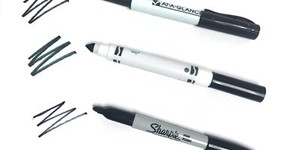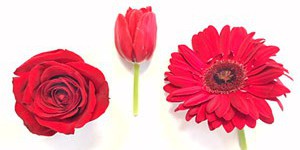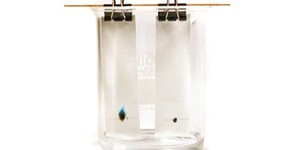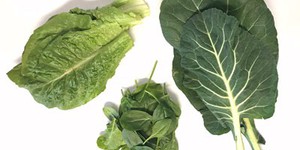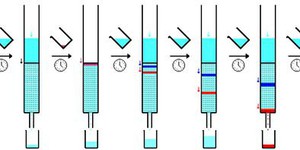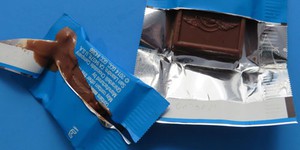Others Like “Candy Chromatography: What Makes Those Colors?” (top 20 results)
|
Have you ever looked at sunlight through a prism? If so, you know that the prism can separate the sunlight into many different colors of light — a rainbow. Like sunlight, chemical mixtures can also be broken into their component parts. One way of doing this is a simple technique called paper chromatography. What do you think you will see if you use paper chromatography to look at the components of black ink? Is black ink just black? Find out for yourself!
Read more
Are all reds the same? Find out in this science fair project! Investigate if the pigments in one type of red flower are different from those in another type of red flower. Flowers contain an assortment of amazing chemicals that produce color. In this plant biology project, you will analyze the colored pigments in different plants' red flower petals using paper chromatography, and compare the pigments in the different flowers.
Read more
Did you know that mixtures can be unmixed? Chromatography is an analytical technique in chemistry to separate mixtures and identify each of its individual compounds. In this project, you will separate ink dyes found in different markers using a strip of paper, chalk and different liquids. By comparing different chromatography substrates and solvents, you will learn how different attractive forces between substances can affect the separation of a mixture into its individual components.
Read more
Do you like to analyze stuff and finding out what it is made of? An analytical chemistry method, called chromatography, allows you to separate mixtures of compounds and to identify each individual compound within the mixture. Chromatography is used by many scientists, for example food scientists, forensic scientists, or organic scientists to analyze all kinds of mixtures such as food, blood, or medicine. In this project, you will be using paper chromatography to analyze the pigments from…
Read more
Do you ever wonder how markers are made? Where do all of those colors come from? Many of the colorful dyes we use come from plants. Could you create vibrant colored natural dyes? Could you turn these dyes into art supplies? You can! In this science project, become a scientist and engineer and make your own marker using homemade plant dye!
Read more
Everyone loves the beautiful colors of fall, but where do they come from and how does the change in colors happen? In this project, you will uncover the hidden colors of fall by separating plant pigments with paper chromatography. What colors will you see?
Read more
What color is grape soda? If you pour it into a clear glass you can easily see it is purple, but that is usually not its natural color. Manufacturers add red and blue dye to the soda. The dyes mix together and you get purple soda. What if you wanted to un-mix the dyes, could you? Yes! In a chemistry laboratory, using a technique called column chromatography, you could separate the two dyes again. But what about at home, can you use low-tech supplies to do the same thing? In this science…
Read more
Chlorophyll is a natural pigment found in green plants. It is the primary pigment that absorbs light energy from the sun for photosynthesis. This energy is then used by the plant to synthesize glucose from carbon dioxide and water. Chlorophyll in the leaves of plants can be extracted and separated using chromatography. A good source of chlorophyll for an extraction is a dark green leafy vegetable like spinach. Rub a fresh spinach leaf on the bottom of a strip of filter paper. You can get a…
Read more
You know that sugar makes food sweet, but did you know that there are different kinds of sugar? Sucrose is the granulated sugar that you usually use for baking. Another kind of sugar, which is found in honey and in many fruits, is glucose. In this science project, you will measure the concentration of glucose in a variety of foods. You will use special test strips that change color in response to glucose to measure the glucose concentration in different foods.
Read more
Did you know that your body has a built-in cooler? And it might not be what you think! Sweat is produced when you are hot, but its purpose is actually to cool your body as the water in it evaporates from your skin. In this science fair project, you'll use the energy produced when water evaporates to cool down chocolate-covered candy so it doesn't melt.
Read more
|
Explore Our Science Videos
How to Build a Toy Car - Science Project
How Do Viruses React To Soap?
Explore Enzyme Activity!


